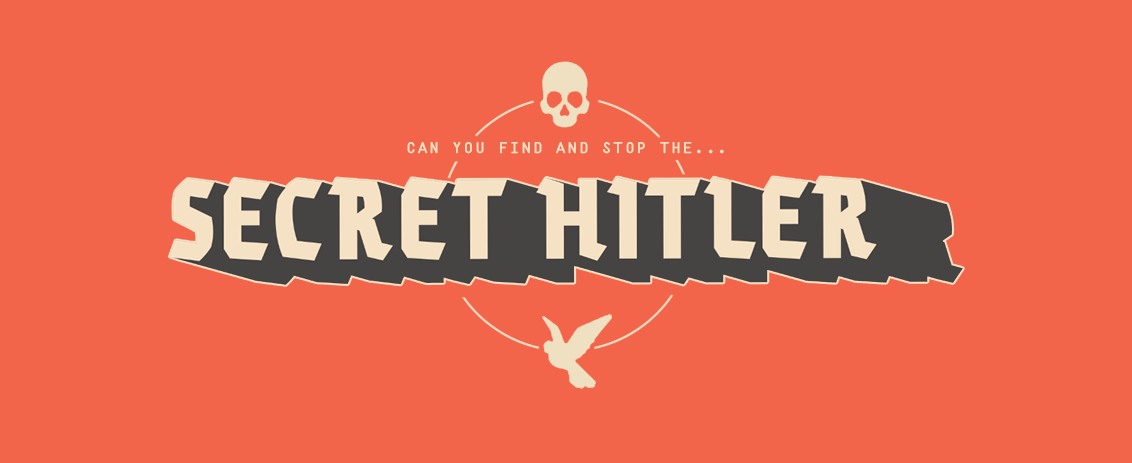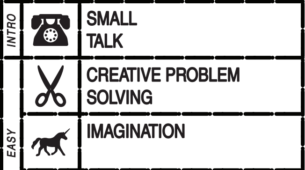
Game: Secret Hitler
Creator: Mike Boxleiter, Tommy Maranges, and Max Temkin | developed and produced by Goat, Wolf, and Cabbage LLC
Platform: Tabletop board game
Target Audience: Ages 14+ | social deduction game for gatherings, typically 5 – 10 players
For my critical play analysis this week, the game I chose to play was Secret Hitler, which is a competitive social deduction game that calls for deception, deduction, and debate.
In Secret Hitler, players are secretly divided into two factions: Liberals and Fascists, including one secretly assigned as Hitler. Players vote to pass liberal or fascist policies, while Liberals attempt to identify and stop Hitler before it’s too late. The game’s appeal lies in its straightforward yet strategic mechanics, where players can engage in a wide array of dynamics. These will include intense conversations, scrutinizing voting patterns, and attempts to discern hidden allegiances only with the help of some minimal but impactful information.
Our team’s game, Code War, echoes concepts from Secret Hitler by leveraging hidden roles and the necessity of sharp social deduction. However, after recently playing Secret Hitler amongst my friends in my apartment, notable differences and design nuances became clear. Code War emphasizes a more complex role structure, introducing distinctive powers such as the Observer, who can discreetly verify another player’s allegiance, and the Avenger, whose elimination provides a retaliatory measure. I felt like Secret Hitler was a lot of fun with the team mechanics, but our inclusion of specialized roles (beyond playing as “Hitler”) hopes to provide further layers of strategic depth and compel players to more closely observe any nuanced behaviors or interactions during the game.
While playing Secret Hitler with a more observant eye, it was really interesting for me to see how deep the social dynamics can be fostered, all through some relatively simple rules. One particular moment that I really was impressed by was when my friend, Anthony, who was on my team, was able to convince everyone to vote for a liberal policy all the while secretly advancing the fascist agenda. Something so straightforward, like a bait-and-switch mechanic or just simply lying, is the only real mechanic at play here, yet it feels so profound and fun to have moments like this occur in games with your friends. We hope that we can create something similar in our game, Code War, and produce an experience that everyone can enjoy.
Code War utilizes an entirely separate primary gameplay mechanism, which takes greater inspiration from other games like Taboo where players must provide one-word indirect hints for the word they’ve been assigned. The player has no clue who else is on their team, or even what team they’re on themselves, but they want to try and learn more information without oversharing about who they themselves are. Contrarily, Secret Hitler relies quite heavily on just direct verbal persuasion and critique, in which it centers around the discourse. Our game has that in the voting stage, but the extra component of word descriptions feels fun and can highlight glaring differences in teams (if players can pick it up). During the latest playtest of Code War in section recently, I got to see some cool and various ways that players came up with adjectives or words to describe their own word, picking up on different hints and trying to communicate in new, indirect, and creative ways, even resorting to onomatopoeia or animal sounds. However, it did get tough in that our gameplay needed smoother and more rigid time mechanics so people weren’t deliberating during the word-sharing part or taking too much time to come up with descriptive words, so hopefully we can improve the game through rhythm or maybe simplify or structure gameplay in some way.
Another fun feature that we have in Code War is our mechanic for how we treat Ghosts, which are our players who lose the game early. One thing we noticed with Secret Hitler and other social deception games is that once you lose, you’re pretty much out for the rest of the game and just watch everybody else have fun. This does provide incentive to not lose; however, imagine being the first person out and just having to watch everyone else… that sucks. So, we incorporated a new ghost mechanic where players who’ve been eliminated can influence the game by controlling the order of speech in subsequent rounds, basically meaning they can select which person goes first in the next round of descriptive words. This motivates player engagement after elimination and was really thrilling to see in our recent playtest by seeing how it influenced later stages in the game. We began with having the ghosts debate over who to start with, but since that took some time, we decided to change it to where the most recent elimination gets to select the starter of the next round. This was definitely a good decision in terms of our playtest, as it kept the game more engaging and novel as well.
Ethically, I can see how Secret Hitler occasionally makes players uncomfortable with its sensitive historical backdrop. I was initially even concerned if this game was too sensitive to do a Critical Play analysis for this class. On the other hand, I feel that Code War’s fictional spy thriller theme is able to evade some of these concerns by using a more ethically ambiguous topic while still increasing player fun with the theme. This could be sensitive if perceived as a take on the “Cold War”; however, we don’t think the connection is too strong, and even then, it’s not more than Secret Hitler. Nonetheless, both titles bear an ethical responsibility in shaping language and associations used throughout gameplay. For instance, descriptive clues in Code War could unintentionally reinforce stereotypes if not thoughtfully moderated, highlighting the importance of careful role and narrative design to foster inclusivity.
Looking at it from the Mechanics, Dynamics, and Aesthetics (MDA) framework, both Code War and Secret Hitler effectively map hidden-role mechanics onto engaging social dynamics of trust and deception. Secret Hitler’s aesthetic thrives on historical tension, while Code War specializes in suspenseful espionage and amnesia scenarios. Through playing the games, I have realized that game design for these games involves creating environments that offer structured guidance while also remaining open-ended to allow for creativity and interpersonal interaction.
When analyzing through the lens of Mechanics, Dynamics, and Aesthetics (MDA), both Secret Hitler and Code War are able to effectively translate hidden-role mechanics into intriguing social dynamics of trust and deception. On one hand we have Secret Hitler, whose aesthetic thrives on historical tension and utilizes board game mechanics to facilitate the gameplay, whereas Code War emphasizes suspenseful espionage and calls for the use of vocabulary and creativity to progress. Through analyzing gameplay from both games, I’ve realized that designing social deception games involves creating spaces that are able to balance the structured guidance of a game with the open-ended possibility for creativity and interaction. Playing Secret Hitler really cemented to me the way that social deduction games are able to strike a careful balance between being simple enough to play easily but produce complex dynamics from them. This is one thing we really hope to employ, and as of now our game Code War seems a bit too complex in gameplay mechanics, but we hope to emulate a simple mechanic producing complex dynamics. While both games were engaging and interactive, I hope that the unique mechanics of Code War can foster a fresh experience that’s fun for all.


